Similar to how scholarly papers cite authoritative sources to support their claims and demonstrate credibility, links signal to search engines that website content is trustworthy, relevant, and valuable to users, resembling receiving recommendations from industry experts.
Quality backlinks often ensure higher rankings, as search engines interpret them as positive endorsements. However, measuring the success of your link building efforts can be a tad tricky.
This comprehensive guide eases the challenge and helps you gauge your strategies with the right metrics.
The Key Link Building Metrics
The following are the best metrics for link building for SEO.
1. Domain Authority
Also known as domain strength and domain rating, domain authority (DA) helps gauge the website’s trustworthiness and relevance. After Moz developed it to include various factors, including the quality and quantity of links, it quickly became a crucial link building metric.
Naturally, websites with higher DA scores typically rank high in the SERPs. This secures increased organic traffic and valuable online influence.
Moreover, a high DA indicates strong link profiles from authoritative sources and consistently valuable content. If your domain strength remains stagnant after acquiring links, you’re likely doing something wrong. That’s why you must consider your monthly organic traffic, link quality, and whether some links are spammy.
To increase the odds of using reliable links, avoid low-authority sites. Target industry and thought leaders, media outlets, researchers, and universities.

2. Page Authority
Unlike domain strength, page authority (PA) refers to the power of individual website pages. This metric assesses the likelihood of a single page ranking highly in search results based on factors such as backlink profile, keyword density, content quality, and user engagement.
For instance, Moz calculates PA using a unique algorithm that evaluates an individual page’s relative strength. Moz considers multiple elements during the process:
- Link Metrics: Moz’s platform assesses the quantity and quality of backlinks pointing to a specific page. Higher PA scores are the result of many inbound links from authoritative and relevant websites.
- Link Equity Distribution: One page can pass value to another through hyperlinks, boosting PA.
- Content Quality and Relevance: Keyword usage, topic relevance, bounce rate, and time spent on the page speak about whether a page is well-optimized, contributing to its PA score.
- User Experience: While Moz does not explicitly state it, it may also assess page load speed, mobile-friendliness, and overall website usability.
You can use other platforms as well to gauge your link building metrics, including Ahrefs, SEMrush, and Google.
3. Quality and Number of Backlinks
Accumulating dozens of domains that link to your website isn’t enough for search engines to deem it influential and credible. While it’s beneficial to have a higher number of links, they should meet specific criteria:
- High domain strength: Ideally, the referring domains should be more authoritative than your website. To be on the safe side, avoid low-quality websites, such as article directories, link farms, spammy directories, forums, and private blog networks.
- Relevance: Every link should be meaningful, reputable, and related to your niche or industry.
- Activity: Websites may eventually become inactive, impacting your backlinks. Check your backlink profile often to ensure they’re still active and their content remains unchanged.
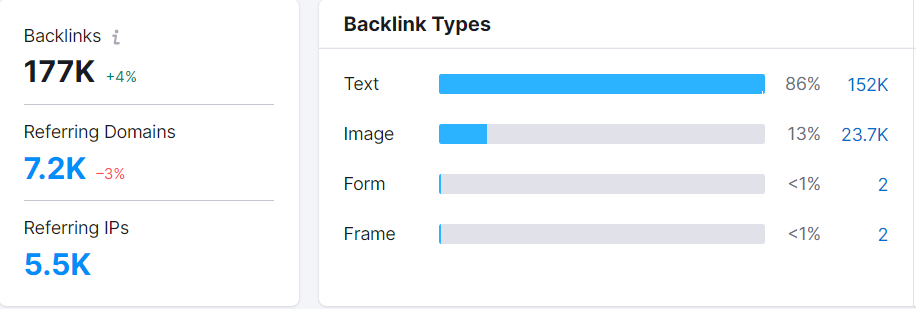
4. Anchor Text Distribution
Hyperlinks consist of underlined clickable text that helps search engines determine the relevance and context of the linked page. So, if a website links to a page using the phrase ‘Best Hiking Gear,’ search engines anticipate information on hiking gear.
However, anchor text used to have more influence than it does today, meaning you should be intentional when building links.
Avoid using too many backlinks with identical anchor text; instead, strive for diversity. For example, rather than repeatedly using ‘Best Hiking Gear,’ consider alternatives like ‘Outdoor Equipment Store.’ Referring domains should also avoid vague terms such as ‘Learn More.’
Otherwise, links may appear unnatural and trigger red flags with search engines, potentially resulting in penalties or lower rankings. Another method to mitigate this risk is to continually evaluate your anchor texts, identifying those generating the most backlinks.
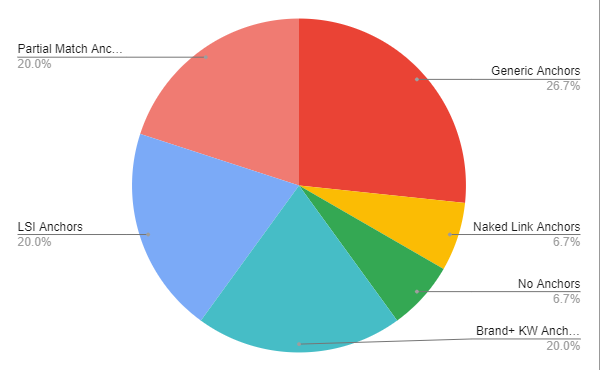
5. Link Diversity
Search engines consider the root of your links when assessing their relevance and favor a variety of sources. Make it a priority to have multiple unique domains linking to your website to establish a diverse link profile.
For example, various reputable sources, such as industry-specific websites and authoritative blogs, are a better choice than always having the same five consulting firms link to your website. Even though Google considers backlinks positive reviews, repetitive links from the same domain don’t offer new trust signals.
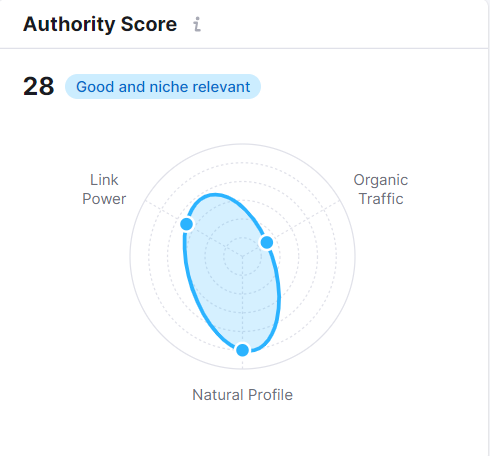
6. Link Velocity
Link building metrics should also include the rate at which a website acquires new backlinks over time. This provides insights into how fast a website’s backlink profile grows or declines, which helps assess the ease and health of its link-building efforts.
For instance, a sudden spike in link velocity could raise red flags. Sometimes, a website gains too many new backlinks within a short period, potentially indicating aggressive or manipulative link-building tactics. On the flip side, a steady and gradual increase in link velocity corresponds with organic growth and a natural accumulation of backlinks.
Monitor how fast you obtain backlinks to identify anomalies, spikes, or drops in backlink acquisition. This gives you a heads-up and enough time to prevent and mitigate the risk of penalties from search engines.
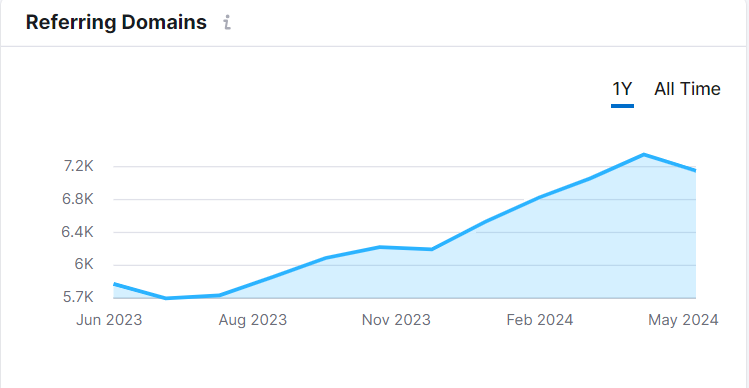
7. Link Placement Relevance
Google can be quite nit-picky when analyzing your link building efforts, so don’t be surprised that it considers the position of a link on a web page. Google’s Reasonable Surfer Model emphasizes the importance of placing links in a position that makes the users more likely to click on them.
Search engines favor prominently displayed links that use striking anchor text and are contextually relevant to the surrounding content. Moreover, links in the footer may not receive as much weight or authority as those within the main content area of a webpage.
Those that blend in with the rest of the text or have the same color and font type could also be less likely to catch the users’ eye and nudge them to click.
In a nutshell, your backlinks are more visible if they are:
- Positioned at the top or center of a relevant web page.
- Appear important and trusted.
- In a font and color that ensures they stand out.
Google monitors the average position of links leading to your site. Links lacking visibility may also lack substantial SEO benefits compared to prominently displayed ones.
8. Cost Per Link
Consider tracking and measuring your link-building campaign’s ROI. This practice will help you understand whether you’re losing too many quality links and if their cost surpasses their value.
You can calculate the total expenses associated with link acquisition. These may include outreach, content creation, and any other relevant costs, which you can then divide by the number of acquired backlinks.
For example, if you invest $1,000 in a link-building campaign and acquire ten backlinks as a result, the Cost Per Link would be $100 ($1,000 / 10 = $100).
This metric provides valuable insights into the efficiency and cost-effectiveness of your link-building efforts. A lower Cost Per Link means your website is acquiring backlinks at a relatively lower cost, maximizing the ROI of your link-building campaign.
However, you can also build backlinks for free. Engage in content creation, promotion, guest blogging, broken link building, and networking to avoid financial investment. Keep in mind that these strategies still require time, effort, and strategic planning.
9. DoFollow and NoFollow Links
There are two types of backlinks:
- DoFollow: These links allow search engine crawlers to follow the link and pass authority, indicating an endorsement of the linked content.
- NoFollow: These links direct search engine crawlers to refrain from tracking the link or transferring authority to the linked page, indicating that the linked content is neither endorsed nor vetted by the linking website.
Social media platforms typically use NoFollow links for user-generated content, comments, and profile links to prevent spam and manipulation of search engine rankings. However, editorial links from reputable websites mainly use the DoFollow attribute to endorse and pass authority to linked content.
While NoFollow links won’t harm your website, aim for DoFollow to boost your organic traffic and reach higher rankings.
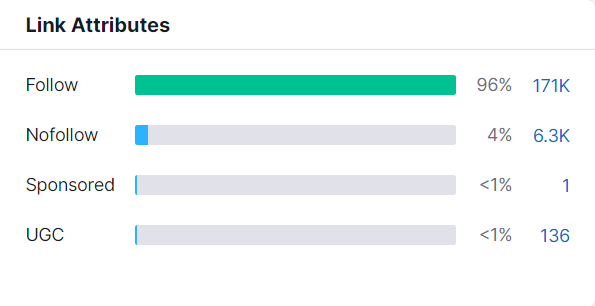
10. SERP Position Fluctuations
Use this metric to assess changes in a website’s position in search engine results pages (SERPs) for specific keywords over time, helping you understand the movement of rankings compared to competitors and indicating improvements or declines in search visibility.
If a website previously ranked on the second page of Google search results for a target keyword but moved to the first page, that means a positive shift in search engine rankings. However, if a website drops from the first to the third page, that’s a negative shift.
To monitor and evaluate this metric, choose targeted keywords relevant to your website’s content first. Rank tracking tools such as SEMrush, Ahrefs, Moz, or Google Search Console allow you to track keyword rankings regularly by providing insights into keyword positions in SERPs and changes throughout time.
Continuously Monitor Your Metrics for Evaluating Your Link Building Efforts
Link building metrics are key strategies for understanding your website’s authority, relevance, and trustworthiness in the eyes of search engines. Start by launching a successful link building campaign and building your links through content marketing.
The goal is to maximize link equity and drive a positive ROI and organic traffic. You may also narrow down your efforts by prioritizing local link building.
If you need help choosing or tracking your link building metrics, consider collaborating with professionals who provide SEO services.





